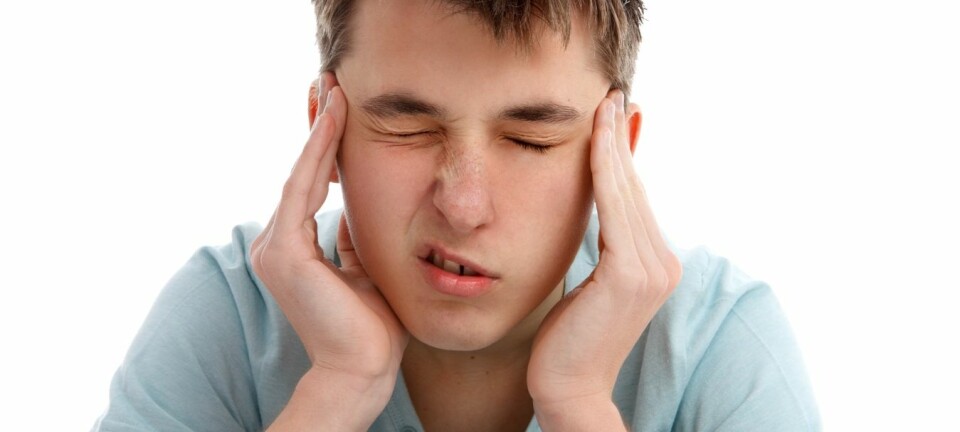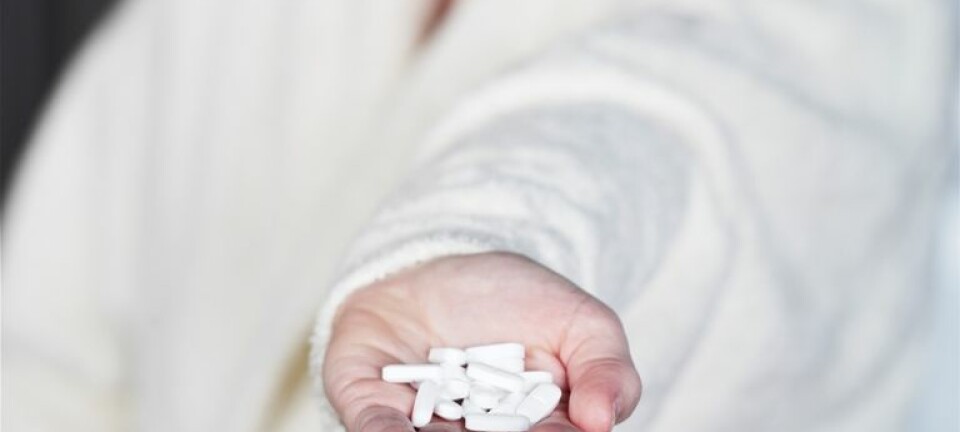This article was produced and financed by Oslo Metropolitan University

Adolescents treat everyday aches and pains with Paracetamol
A growing number of adolescents suffer from pain. Many of them consume large amounts of over-the-counter painkillers.
Denne artikkelen er over ti år gammel og kan inneholde utdatert informasjon.
This is one of the findings of new research on the alarmingly high consumption of painkillers by adolescents.
The research also shows that adolescents who are high-frequency users of painkillers often have low levels of self-esteem, higher absenteeism from school, and lower ambitions for the future.
According to RELIS, a publicly funded drug information service, more that 25 percent of 15- and 16-year-olds in Norway use this type of medication daily or weekly.
"This brings to light a number of problems, and health nurses in the school health service can play a key role in identifying young people at risk and in intervening at an early stage," says PhD candidate Siv Skarstein at the Department of Nursing, Oslo and Akershus University College of Applied Sciences.

"For one thing, all drugs have side effects, and paracetamol in excessive doses can cause liver damage. Another issue is that not many young people realise that overuse of over-the-counter painkillers can cause chronic headache," says Skarstein, adding that medication habits are established in the teenage years.
Mapped young high-dosage users
Skarstein mapped characteristic features of young high-dosage users by means of an anonymous questionnaire completed by 15-year-olds from six lower secondary schools in the Drammen region. A total of 367 tenth-graders participated in the study.
Fifty percent of the boys and 71 percent of the girls had used over-the-counter painkillers during the previous month. Twenty-six percent of the adolescents had used such drugs daily or weekly, and almost as many boys as girls were among the high-dosage users.
"This was surprising, because other studies on pain have shown that girls experience more pain than boys. Our material shows that more girls than boys were represented among the adolescents with less frequent and more sporadic use. This is probably because girls experience aches and pains in connection with their menstrual cycle," says Skarstein.
Experience considerable pain
The research shows that adolescents with high-frequency use of painkillers experience considerable pain. This pain is often felt in multiple parts of the body, and headache and musculoskeletal pain are the most common types.
Examples of situations that can cause aches and pains are excessive screen activity, hectic programmes involving friends and physical training, low intake of fluids, and excessive classroom noise. This suggests that there may be a connection between a stressful everyday life on the one hand and pain and frequent use of painkillers on the other.
"When so many adolescent choose to use painkillers daily and weekly, this is a sign that many of them are suffering from pain. Pain has a significant impact on sleep and perceived quality of life. The adolescents who are high-frequency users of painkillers more often have a higher daily intake of caffeinated drinks, which may represent attempts at countering tiredness.
"We must take adolescents seriously when they complain about aches and pains. Painkillers are not a good long-term solution," says Skarstein.
Lower self-esteem
Skarstein's study shows that high-frequency users in the study sleep less, drink slightly more alcohol, and have lower ambitions and expectations for the future. They also have lower self-esteem, higher rates of absenteeism from school, and more often have part-time jobs.
The study gives no indications that cultural differences, financial situation at home, breakfast intake, social environment, or participation in sports activities influence the use of over-the-counter painkillers.
"Prolonged stress can cause physical complaints, and pain may be a warning sign that something is wrong. We humans are differently equipped, and some of us have more difficulty dealing with stress and the demands of everyday life. Another point is that some of us are faced with situations or events that are so serious and prolonged that they cause stress overload," says Skarstein.
"On the basis of this study we can say that high-frequency use of over-the-counter painkillers, aches and pains, absenteeism from school, and tiredness ought to be treated as warning signs that need closer examination," she adds.
Skarstein also sees a need for a deeper understanding of adolescents' everyday life and of the underlying causes of and contributory factors to high-frequency uses of painkillers. She is therefore underway with a new study in which she is conducting in-depth interviews with adolescents with high-frequency use and investigating what might help.
The two year research project began in 2011 and is a joint project of Oslo and Akershus University College of Applied Sciences and University of Oslo.



































